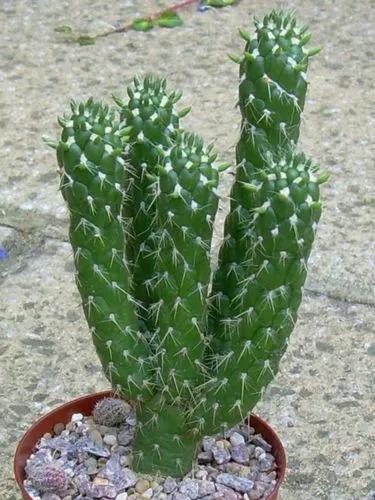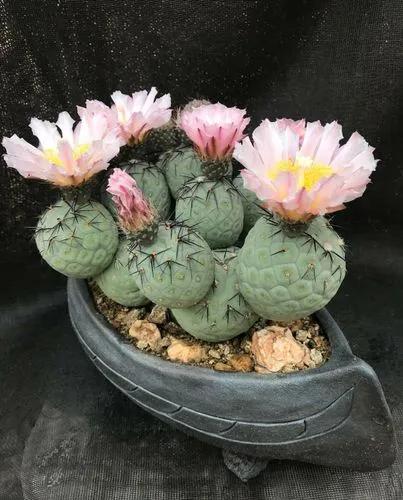There are four characteristics that distinguish Coryphantha from other cacti. Their bodies do not have ribs, just tubercles. The flowers form at the top of the plant (the apex or growing end of the stem). The tip (podarium) of each flowering tubercle has three parts, the spiny areole, the groove and the axil. Without the groove it is not a Coryphantha. The seed coat (or testa) has a net-like pattern
Coryphantha Pycnacantha Care
Coryphantha Pycnacantha



What is the plant
How to Care for the Plant

Water

Water moderately, waiting for the substrate to dry completely. In winter there is no need to water.

Pruning

Pruning is not necessary.

Fertilizer

Fertilize with mineral cactus fertilizer in early spring.
Ease your plant care routine with PlantIn's personalized system.

Sunlight

The Coryphantha andreae prefers a light shade exposure avoiding direct sun at noon.

Soil

The soil can be a mixture, in equal proportions, of coarse siliceous sand and very decomposed leaf mulch; a commercial cactus substrate can also be used.

Temperature

They resist temperatures up to 0 ºC.
Ease your plant care routine with PlantIn's personalized system.

Container

They are used in rockeries and in pots and planters for balconies, terraces and very bright interiors.

Popularity

25 people already have this plant 2 people have added this plant to their wishlists
What's wrong with your plant?
Related Plants
Discover more plants with the list below
Popular articles






